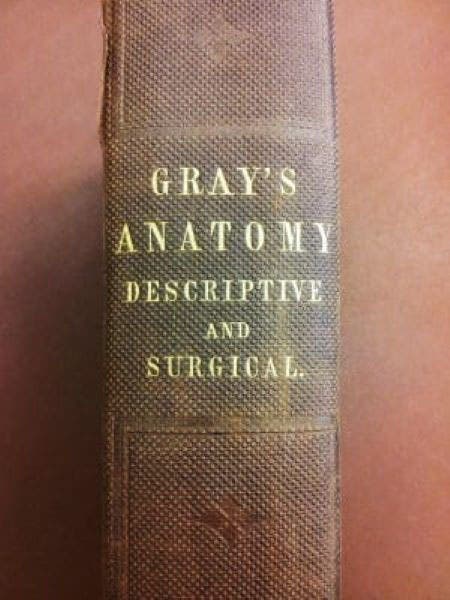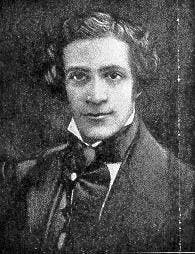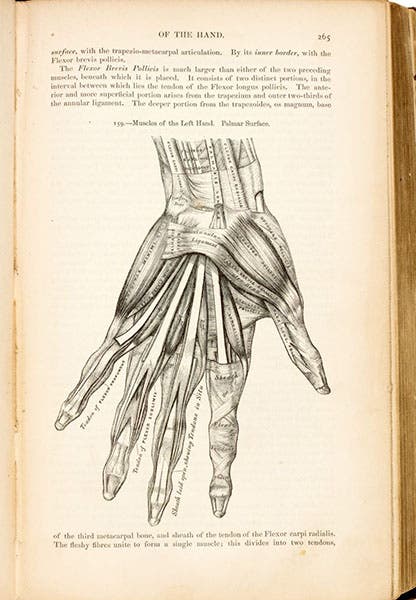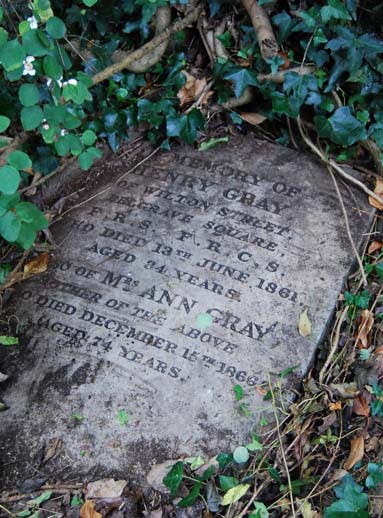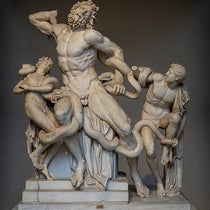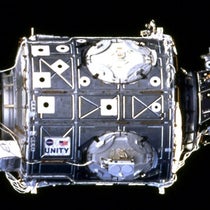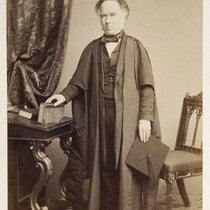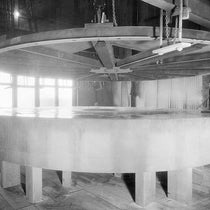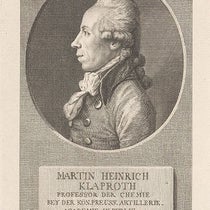Scientist of the Day - Henry Gray
Henry Gray, an English surgeon, died June 13, 1861. Gray attended the medical school at St. George's Hospital, near Hyde Park in London. He met a fellow student, Henry Vandyke Carter, who had quite a flair for anatomical illustration. The two teamed up to write and publish a book on the spleen (1854), which was a financial disaster, as very few copies were sold.
But Gray surmised that a general anatomy textbook, intended for surgical and medical students, might sell much better. He secured support from a publisher, John William Parker, father and son (both with the exact same name), and the publishers contracted with Carter to supply the wood engravings, over 360 of them. The two men, Gray and Carter, worked nonstop through 1856 and 1857 to finish the book, which was published in 1858 as Anatomy, Descriptive and Surgical. The spine, however, said Gray's Anatomy, and Gray's Anatomy it has been ever since (first image).
One of Gray’s major character flaws was that he was unable to share credit with anyone. When he received the proof sheet of the title page, which had his name first, as author and Carter's below, as illustrator, but in the same-size font, he marked up his proof, insisting that Carter's name be in a smaller font, and he stripped Carter of all his titles but one. We know this, because the marked-up sheet still survives at the Royal College of Surgeons, and Ruth Richardson reproduced it in her excellent book on Gray's Anatomy, cited below (fifth image).
Even worse, Carter did not credit any of the sources he used for his text. A book like this is necessarily a compilation, and no previous author would really mind being used, as long as they were credited, but Gray not only used, he copied verbatim, and cited no one. This was pointed out, rather viciously, in the first major review of the book, an anonymous one in the Medical Gazette, which compared Gray's text side-by-side with passages from previous texts, to demonstrate Gray's blatant plagiarism.

Proof copy of title page of Anatomy, Descriptive and Surgical, marked up by Henry Gray, in the archives of the Royal College of Surgeons, reproduced in The Making of Mr. Gray's Anatomy: Bodies, Books, Fortune, Fame, by Ruth Richardson, p. 199 (author’s copy)
But it didn't matter, because no one bought the book for the text. Carter's wood engravings were the big draw (fourth image). They were large, clear, unmessy, and clearly labeled, which is difficult to achieve with parts of the human body, as the previous 300 years of anatomical illustration can attest. I wrote a post on Carter once, when this blog was young, but I had to make do with images I found online, since we do not own an early edition of Gray's Anatomy. Since we do not collect medical books, that might not be surprising, but I made an argument then for acquiring the book, because it is a milestone in scientific illustration, and we do collect books that fit under that rubric. We have the great anatomical work of Andreas Vesalius (1543) for that reason, and we should have Gray's Anatomy, for the very same reason. But if and when we do acquire the book, I will not be referring to it as Gray's Anatomy. To me, the only fitting title is Carter's Anatomy.
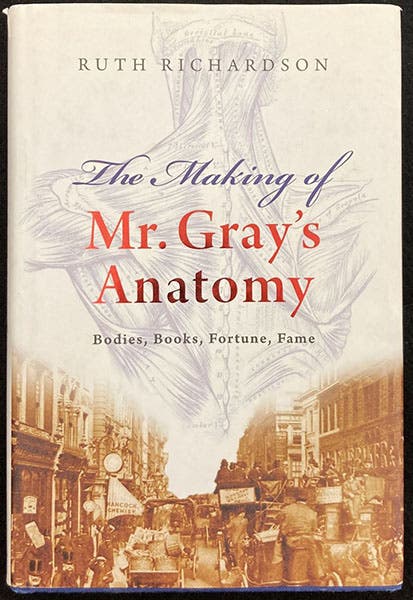
Dust jacket, The Making of Mr. Gray's Anatomy: Bodies, Books, Fortune, Fame, by Ruth Richardson (Oxford, 2008) (author’s copy)
If you would like to know more about the production and reception of the book, I highly recommend The Making of Mr. Gray's Anatomy: Bodies, Books, Fortune, Fame, by Ruth Richardson (Oxford, 2008; sixth image).
As for Gray, he revised his book for a second edition in 1860, and then suddenly died of a virulent form of smallpox, which he contracted from his nephew, for whom he was caring. This was in 1861, when he was just 34 years of age. For all his faults as a collaborator, he did not deserve that. He was buried in Highgate Cemetery in London, where his gravestone may still be seen (seventh image).
William B. Ashworth, Jr., Consultant for the History of Science, Linda Hall Library and Associate Professor emeritus, Department of History, University of Missouri-Kansas City. Comments or corrections are welcome; please direct to ashworthw@umkc.edu.


